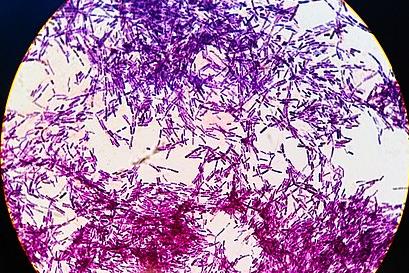The microscopic soybean cyst nematode (SCN) may be small, but it has a massive impact. This pest latches onto soybean roots, feeding on their nutrients and leaving a trail of destruction that costs farmers billions in yield losses each year. Unfortunately, current methods to combat SCN are faltering as the pest grows resistant to traditional controls. But new research is now offering a glimmer of hope.

A collaborative team of scientists from BASF Agricultural Solutions and the Advanced Bioimaging Laboratory at the Donald Danforth Plant Science Center are working on a potential solution: a special protein known as Cry14. Published in the journal Molecular Plant-Microbe Interactions (MPMI), this innovative study details how the Bacillus thuringiensis delta-endotoxin could revolutionize the fight against SCN.
Lead author R. Howard Berg and his team have developed a way to genetically equip soybean plants with this special protein. This approach, long used in other crops such as corn and cotton to combat insect pests, has now been implemented successfully to prevent SCN from feeding on soybean roots.
Higher yields
This study addresses key scientific questions about the Cry14 protein, including its function and its potential to enhance existing agricultural products for farmers. The study demonstrates that combining Cry14 with current treatment options reduces the SCN population in soybean roots, ultimately leading to higher soybean yields.
READ MORE: Not the usual suspects: Novel genetic basis of pest resistance to biotech crops
READ MORE: Bacterial gene deployed in new trees to combat devastating citrus greening disease
The research team also investigated how Cry14 provides this protection. Conflicting data in the scientific literature have raised questions about what size is “too large” for SCN to ingest. The Cry14 protein exceeds the previously assumed size limit. However, using state-of-the-art electron microscopy and imaging equipment, the team captured groundbreaking images of the Cry14 protein inside the guts of SCNs feeding on soybean plants expressing the protein. These images provide direct evidence that Cry14 can be ingested by nematodes.
And for the first time, high-resolution electron microscopy was used to document Cry-induced damage, revealing membrane lysis in intestinal cells, which leads to cell death. This finding confirms the expected mode of action for Cry proteins.
Pathway to pest control
This groundbreaking research creates a path for the use of other Cry proteins to control SCN and other nematodes. Until now, conflicting literature and challenges working with Cry proteins had all but closed the door on this as a viable approach for nematode control in plants.

This technology comes along at a critical time: when SCN is developing resistance to control by native soybean traits. The new cell biology information on how Cry14 affects the intestine could stimulate other researchers to apply this technology in novel ways.
For additional details, read “Immunolocalization and ultrastructure show ingestion of Cry protein expressed in Glycine max by Heterodera glycines and its mode of action,” published in MPMI.







No comments yet